I Used A Kneeling Ergonomic Chair For 30 Days And Here's What You Need To Know
Hi! I'm Farrah, and like a good portion of all office culture employees, I am still working from home during the pandemic. My current "office" chair cost me a total of $30, but I've been having an increase of shoulder and neck pain, which I attribute to hunching while working at my computer. Basically, I'm desperate to try something new, which led me down the rabbit hole of ergonomic chairs.
When I came across the Sleekform ergonomic chair, I was like, "THIS WORKS?!?" The people using this chair in photos looked comfortable. I also noticed they weren't hunched! So I decided to learn a little more from the Sleekform team and try it for myself.
I chatted with Robin, the marketing director for Sleekform, who told me the biggest hesitation about switching to this type of chair: "The biggest concern we hear from people who are on the fence about these kinds of chairs is the lack of a backrest," Robin explained. "What is important for people to know is that the seat is tilted at a 120-degree angle as opposed to the typical 90-degree angle most chairs are. The way this subtle tilt helps keep your front body/core engaged and stops you from hunching into a C shape is pretty incredible. When you are naturally upright like that, you don't need to rely on a backrest to hold you up. Your weight is brought forward just enough to make sitting easy."
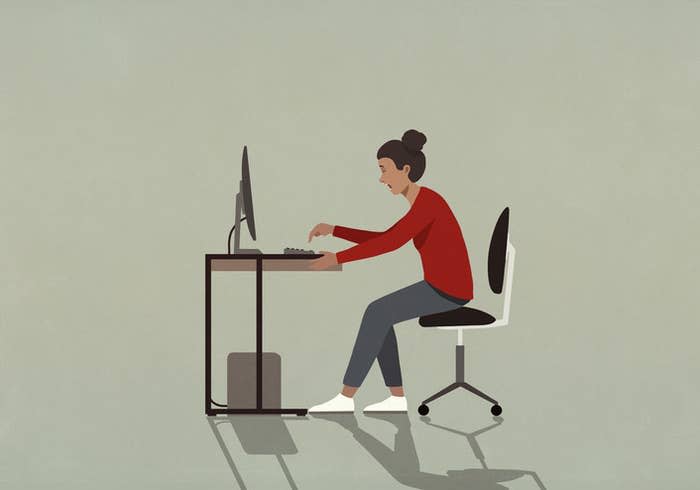
I reached out to Dr. Heather Jeffcoat, DPT and owner of Fusion Wellness & Femina Physical Therapy, who told me, "Research does support improved pelvic tilt at a 120-degree angle with the knee at a 90-degree angle (a normal degree of lordosis is also referred to as our 'neutral spine'). When your lower back is in neutral to slightly anteriorly tilted, your transverse abdominus and pelvic floor muscles are able to engage more optimally than when it is in a flexed (rounded) position."
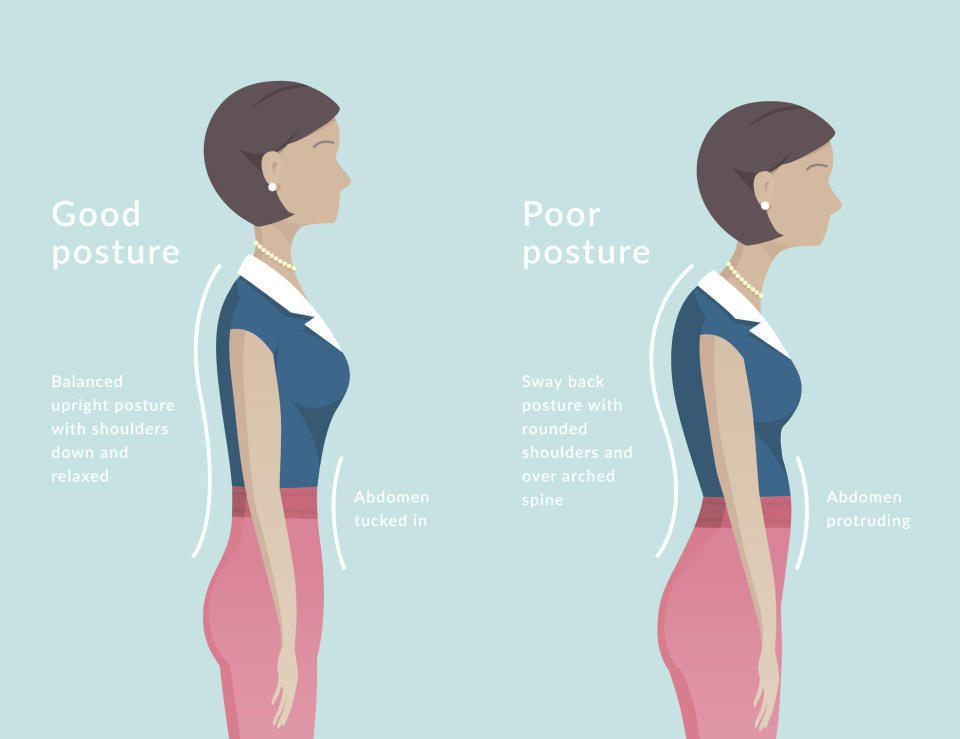
But how does it work? And is this position actually good for your body? Robin went over the science behind it: "When you’re using a kneeling chair, your hips slide forward. The forward angle is essential as your weight gets evenly distributed, and your neck, shoulders, and back are aligned," she explained. "There is less stress on your lower back. This prevents spinal compression and helps keep your shoulders effortlessly rolled back and down, allowing for relief in the upper spine and neck as well. It's all about the 120-degree angled seat as opposed to the regular 90 degrees. Open hips equals engaged core, which causes less pressure in the back, which results in natural posture and less back pain."
I wanted to know if there was any downside to switching to this kind of chair, and Robin explained that there is an adjustment period. "Tenderness in the shins and some back fatigue are pretty normal for the first week or so. It's like starting a new workout; your body quickly adapts and gets stronger."
When I asked Dr. Jeffcoat if this is an ideal way to sit, she explained, "Certainly, people with knee injuries would need to use this with caution as the force appears transmitted to the knees. This could be beneficial for folks with hip impingement, as they will often have pain going from sit to stand, but those are typically at angles around 90 degrees of hip flexion. One study suggested a 135-degree incline specific to folks with limited hip flexion range of motion as being a recommended hip angle. Having less flexion takes it out of an impinged position and could potentially reduce hip pain in folks as well. If back or neck stiffness or pain is the primary concern, then what this does posturally for the spine is a good option to consider. However, I don’t see it as an ideal chair for everyone."
According to Dr. Jeffcoat, the best way to work is by alternating positions. "If you are in a neutral spine, it absolutely puts less pressure on your lumbar spine than when you are in a flexed position," she said. "I am more of a fan of alternating between seated and standing positions. Any static position is not an ideal position for anyone."
With all this great information in the back of my mind, I set out to try it for myself! Here's how the last 30 days went for me.
First, I was shocked when I received the box. It was really compact and flat! I figured I would open it up and have a million pieces to put together.
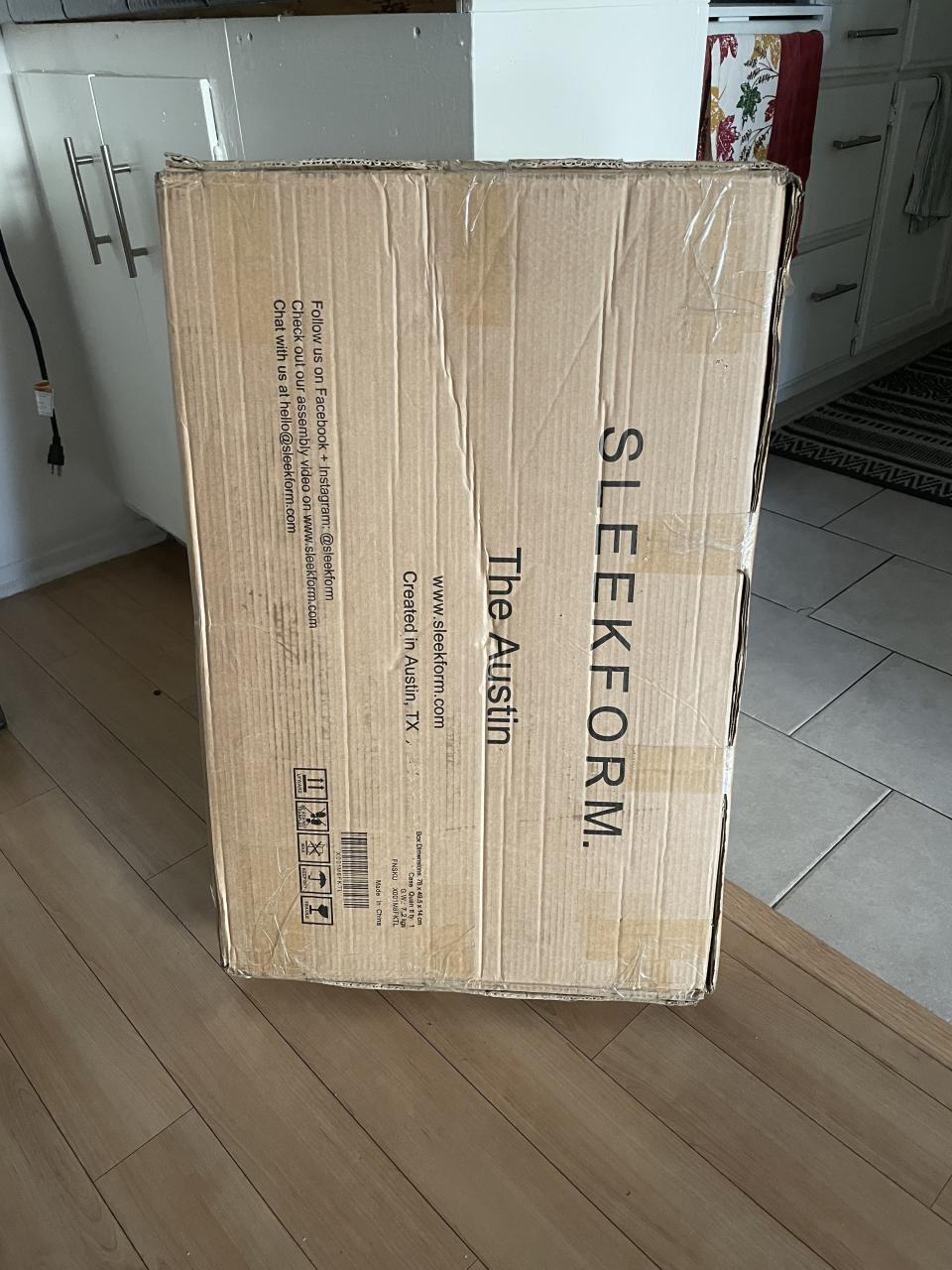
To my surprise, it wasn't as complex as I made it out to be in my head. It's about as difficult as assembling a bookshelf from Ikea. I even timed my process to figure out how long it would take me to put together, which was a little over 50 minutes by myself. I struggled with a few of the holes but eventually got it. The end result was nice and sturdy.
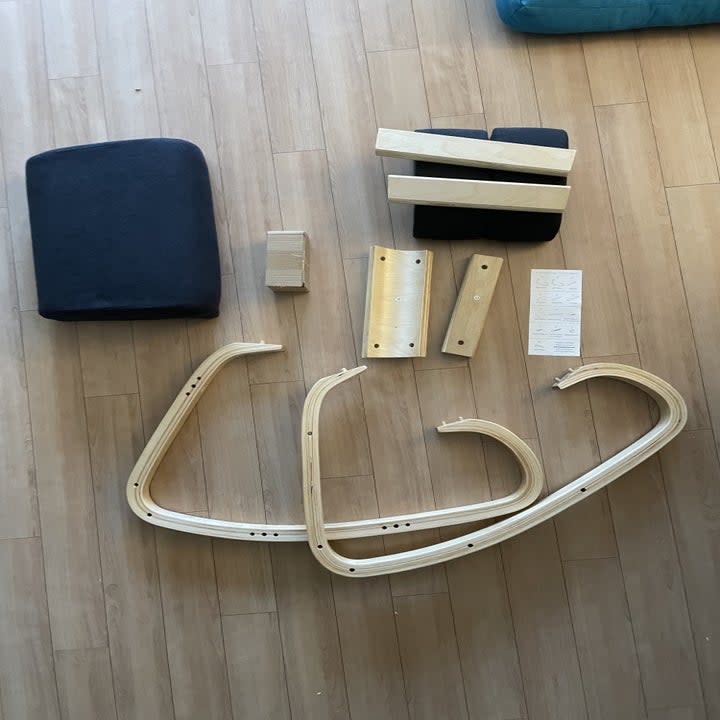
The chair itself looks compact, but it's as tall as you need to work at a regular-sized desk. I also love how it scoots under the desk nicely when I'm not using it.
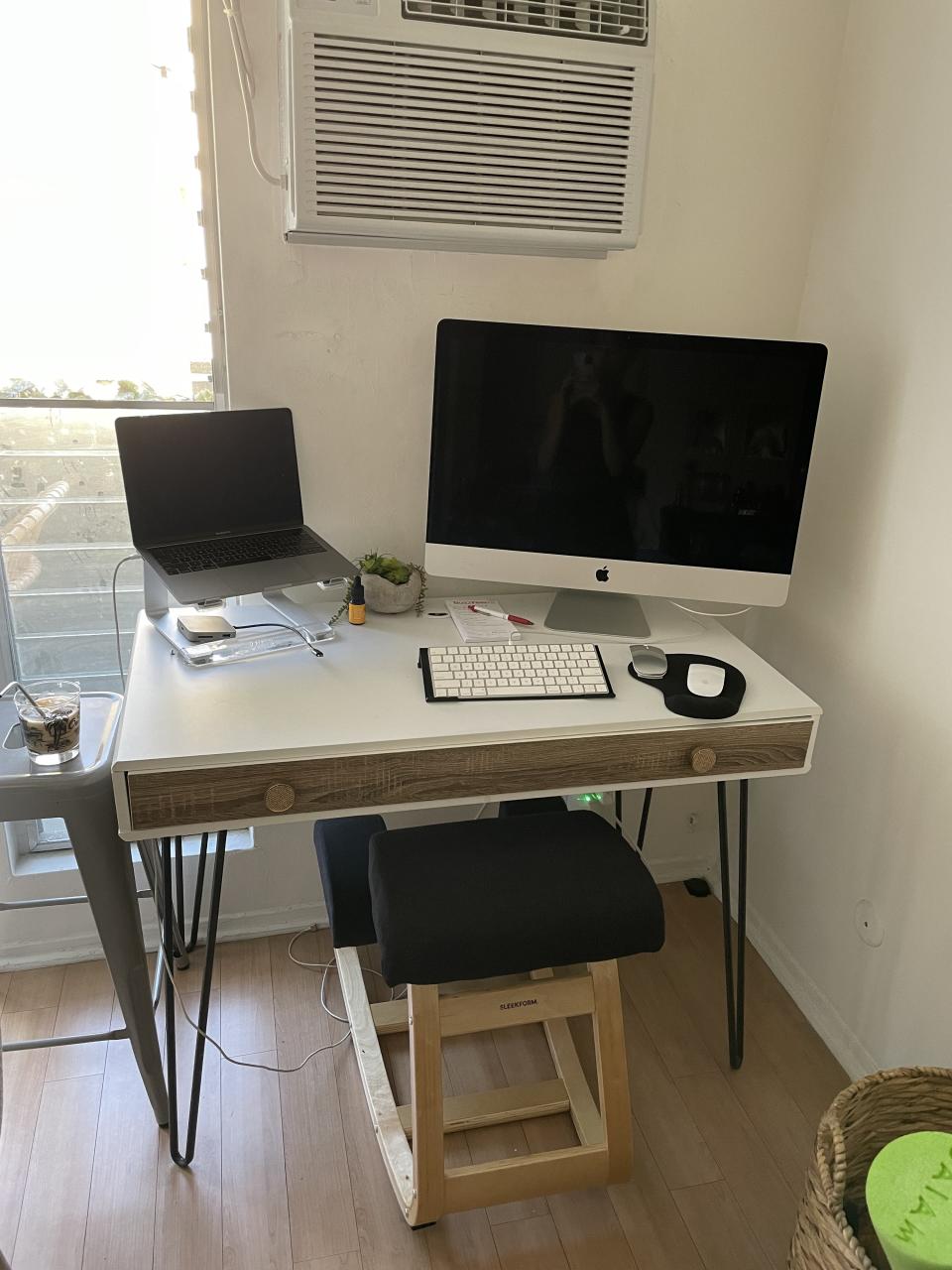
Once I put it together, I was excited to try it out! On the left was my first attempt to get on it. I thought I was about to fall backward! But once I sat down, I realized that it is pretty impossible to fall over, even if you lean really far back. Once I got my bearings, my first thought was that the cushioning is REALLY comfortable.
Farrah Penn / BuzzFeed
Like Robin said, I did have some shin tenderness during my first week using this chair. It also came and went if I was working for too long in the same position. It wasn't terrible, and it didn't hinder my ability to walk. I immediately noticed that it forced my posture into a better position. I wasn't hunched. My shoulders felt more open and less tight. And I wasn't experiencing any neck pain once 5 p.m. hit.

I didn't miss a backrest. I have tight hip flexors and pelvic floor pain, so I really loved how this chair is designed to position you at 90 degrees. It felt like a lot of my weight shifted to my shins, which meant that there wasn't as much pressure as when I sat on a normal chair. I found myself looking forward to coming to my desk every morning instead of dreading how I would feel at the end of the day.
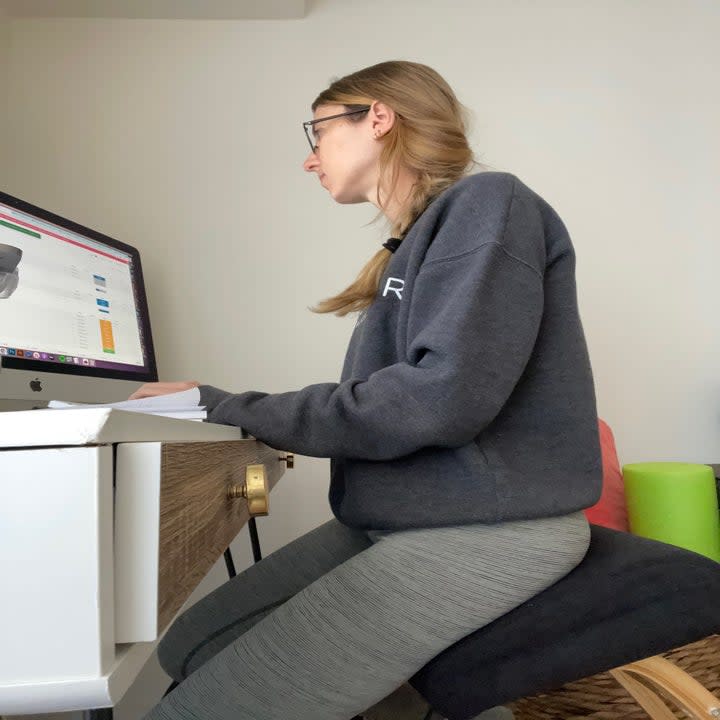
Here are my overall thoughts:
- The position of this chair puts your body in a better posture for working, but you do have to consciously make sure that your shoulders aren't rolling forward.
- This didn't cure any of my pelvic pain problems, but it sure did make sitting much more comfortable.
- I didn't miss a backrest.
- It doesn't rock unless you force it to rock, and even though it doesn't look like it, it is pretty impossible to fall off.
- I don't have any little kiddos, but if you do, you might want to make sure they're not crawling under you when you use it to protect their little fingers.
- I did experience some pain in my right shoulder, but I think this is due to it being my dominant hand that navigates the mouse at my desk all day.
- I'm really glad I made the switch. The cushions and position are way more comfortable than I had thought they'd be.

